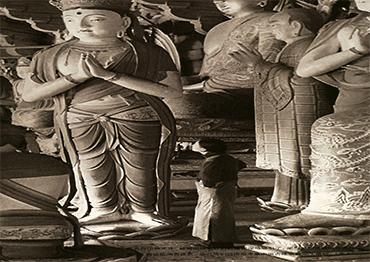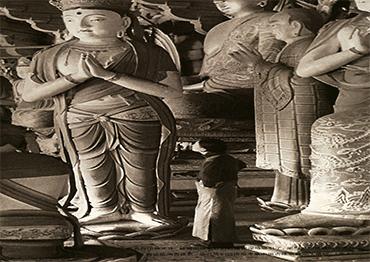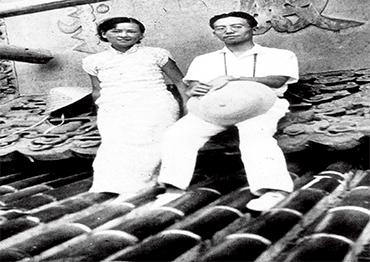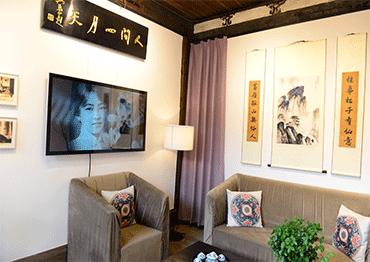On July 5, 1937, Lin, Liang and scholars from the Society for Research in Chinese Architecture (SRCA), a private architectural organization established in 1930 by politician-turnedscholar Zhu Qiling (1872-1964), were investigating Foguang Temple. The ancient beams were obscured by a colony of bats. But then, under thick layer of dust, Lin spied some characters written on one of the beams.
They referred to the monastery’s female owner, Ning Gongyu. Lin recognized the name from the Buddhist inscriptions chiseled on the Tang column, known as a jing chuang, at the door. Since few such columns were built before a temple building, they realized Foguang Temple was completed no later than the Tang Dynasty.
Lin’s sharp observation ought to have been better celebrated if it were not for the outbreak of war. Two days later, Japan expanded its aggression by waging total war with China, starting with the infamous attack on the Marco Polo Bridge (Lugou Bridge) in Beijing on July 7.
The couple and their two children fled south to Kunming, Yunnan Province. During their life-and-death journey, they narrowly escaped a bomb in Changsha, Hunan Province. Lin’s health deteriorated and she almost died from a fever and TB. Despite this, she urged her husband not to forget their mission for the SRCA. Even during the war, they continued to help protect and document ancient Chinese architecture and building techniques.
In Liang’s book A Pictorial History of Chinese Architecture published in 1946, the architect wrote in the preface: “I am much obliged to Lin Huiyin, my wife, colleague and former classmate. For more than 20 years, she has continuously contributed her relentless efforts to our common cause... Although having been seriously ill over the past few years, she has in no way lost her intrinsic wisdom and resilience. During the darkest hours of the war, the SRCA would not have been so indomitable without her courage... Without her cooperation and inspiration, it would be impossible for me to finish this book as well as other research on Chinese architecture.”
Zhao Chen, a professor from the School of Architecture and Urban Planning at Nanjing University, told Xinhua Daily Telegraph on October 20, 2023, “Lin was the first architect to create theories for traditional Chinese architecture. The majority of theoretical references and frameworks we now use to analyze and evaluate Chinese architecture largely come from her two dissertations – On Distinctiveness of Chinese Architecture (1932) and Introduction to Qing (1640- 1911) Structural Regulations (1934).”
“The West has yet to recognize the complex craftsmanship and exquisite artistic structures of traditional Chinese architecture due to its deceptively simple appearances,” Lin wrote in her 1931 dissertation. “Therefore, our generation of Chinese architects is responsible for correcting this bias by providing convincing evidence based on extensive research and meaningful exchanges to enable Western architects to better understand the value of Chinese architecture.”
Lin also helped to preserve the architecture of Japan, even after her half-brother, pilot Lin Heng, was shot down and killed by Japanese fighter planes in 1941 over Chengdu, Sichuan Province.
In 1945, on request of the Allied powers, Lin mapped the notable structures of Nara, regarding the temples of the ancient Japanese capital as priceless assets for all of humanity.
After the founding of People’s Republic of China in 1949, she was a leading architect for the designs of the National Emblem and the Monument to the People’s Heroes in Tiananmen Square in Beijing. However, she died on April 1, 1955 with the regret that she could not prevent the demolition of Beijing’s ancient city walls.

 Old Version
Old Version




